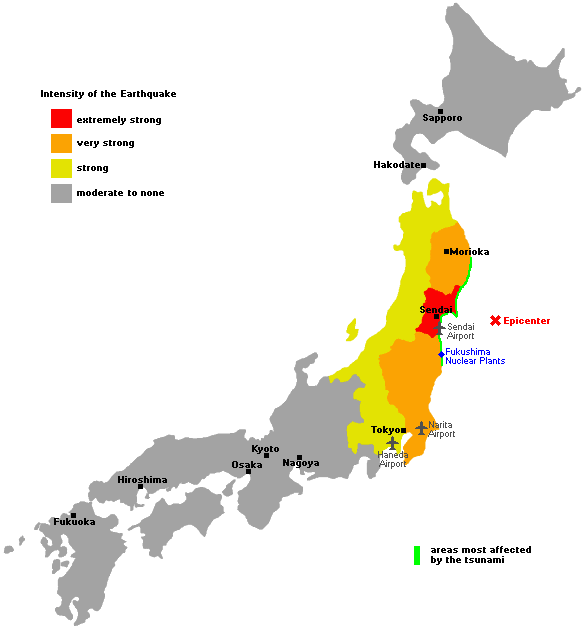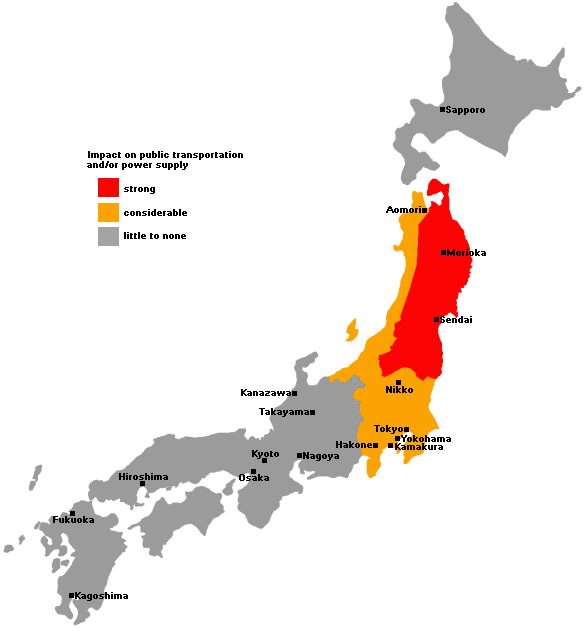| Earthquake and Tsunami Update |
| Updated March 16, 07:15 Strong earthquakes hit the Tohoku Region in the afternoon of March 11, triggering several meter high tsunami waves that caused massive destruction and loss of human lives in areas along the Pacific coast of eastern Japan, especially in Miyagi, Iwate and Fukushima Prefectures. The earthquake itself caused major damage in areas close to the epicenter, as well as scattered fires and damage across the Tohoku and eastern Kanto area, although it did not cause widespread damage in any major city as seen in Kobe in 1995. The tsunami, however, caused extensive damage beyond imagination in coastal areas along the Pacific coast of northeastern Honshu.  No radiation dangerous to human health has been measured outside of the evacuation area. Prospective travelers to Japan should keep an eye on the quickly evolving matter, but avoid the sensationalist type of media as their source of information. Power shortage The damage to the nuclear plants is causing power shortages in Eastern Japan. As a result, rolling blackouts are carried out in the Greater Tokyo Region (except most of central Tokyo), western parts of the Tohoku Region and Niigata Prefecture for an undetermined period of time. Power is switched off for 3-hour periods in rotation between designated areas during daytime. Some areas of Tokyo and the following major tourist destinations will be affected by the rolling blackouts: Yokohama, Kamakura, Hakone, the Fuji Five Lake region, the Izu Peninsula and Nikko. Effects on transportation All major airports (except Sendai Airport) are open and operating. Due to the power shortage, many train lines in the Greater Tokyo Region are operating at reduced frequencies, stop service during certain periods of the day or are completely stopped for the entire day. All major train lines in Tokyo's city center are running, but many at a slightly reduced frequency.
Otherwise, train service in the Tohoku Region is taking some first steps towards normalization. Trains are now running along the entire west coast and along parts of the Tohoku Main Line. However, almost all other train lines in the region remain out of service. Trains are running normally in the other parts of Japan, including the Kansai Region around Osaka and Kyoto, the Chubu Region around Nagoya (except some parts of Shizuoka and Yamanashi that are also affected by the blackouts), Kyushu, Shikoku, Hokkaido and Okinawa. Effect on trips to Japan For the above reasons, prospective tourists are advised not to visit the eastern Tohoku Region and to reconsider traveling to the Greater Tokyo Region and the western Tohoku Region in the near future. Visits to Western Japan are currently not affected by the disaster. Because only five days have passed since the earthquake, various issues remain unclear. However, they are likely to become more comprehensible within a matter of days. If feasible, people with travel plans over the coming weeks and months are advised to observe the situation for a few more days before making eventual postponements or cancellations.  |
| FULL CREDIT : japan-guide |










0 comments:
Post a Comment